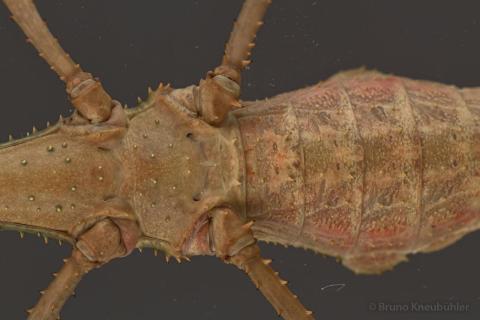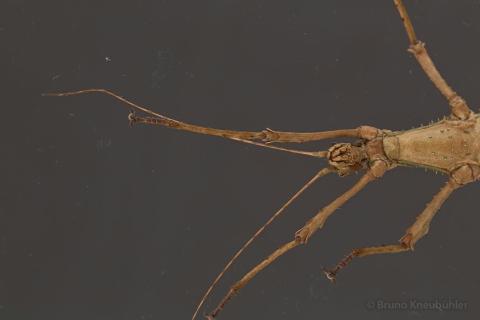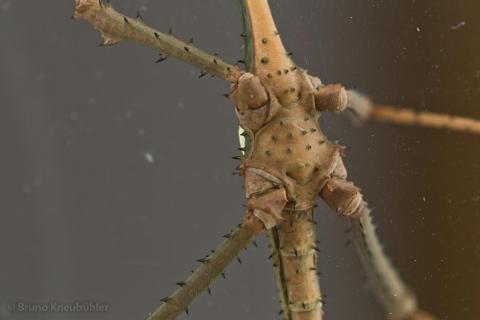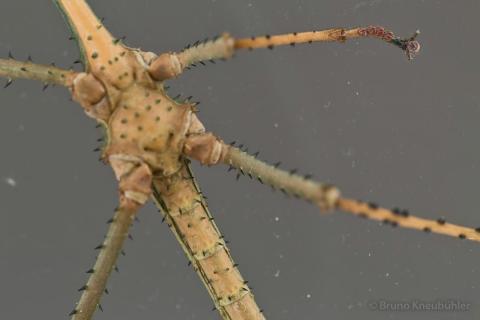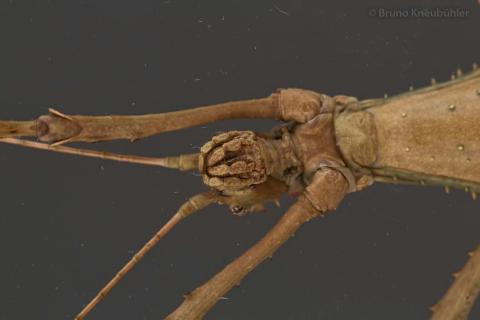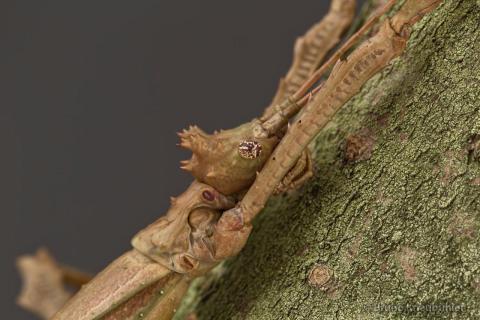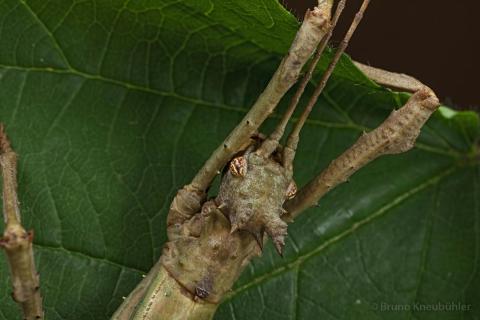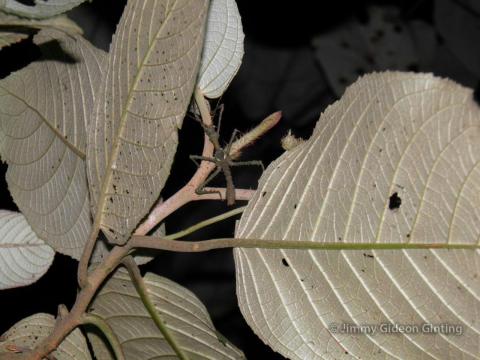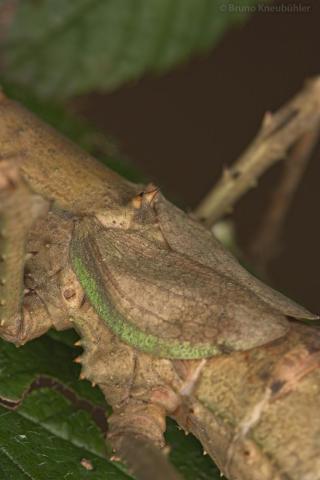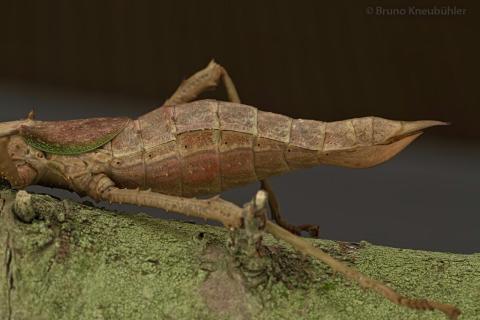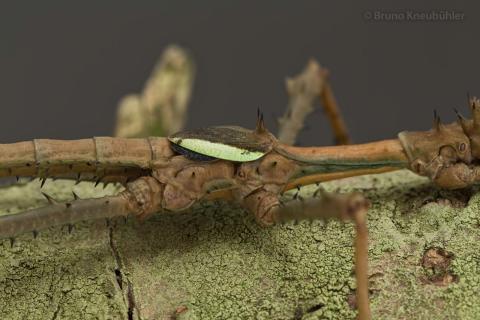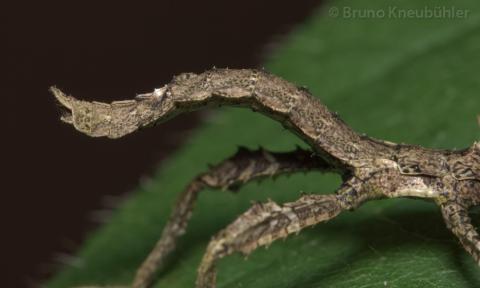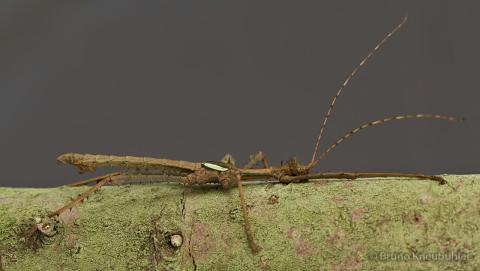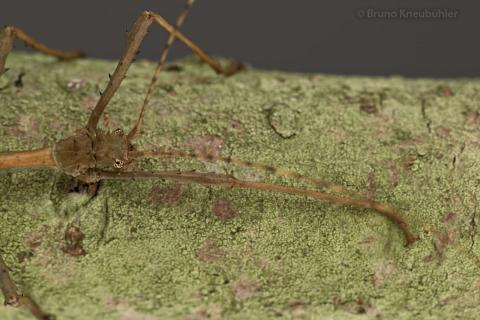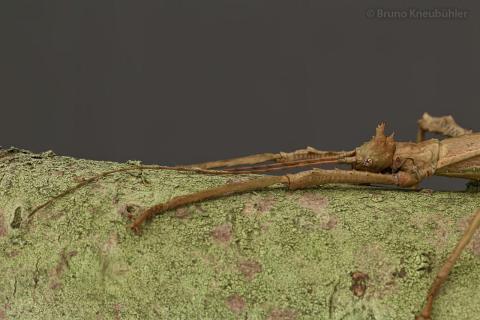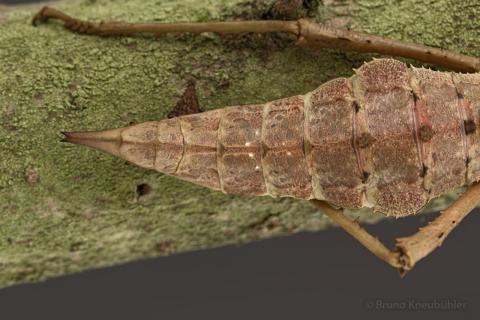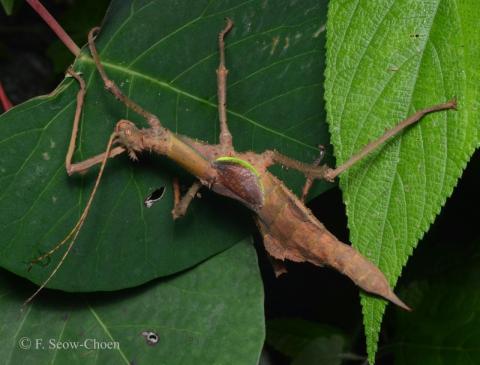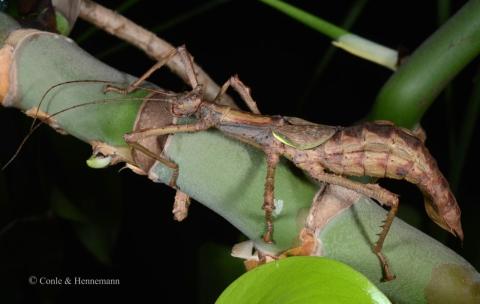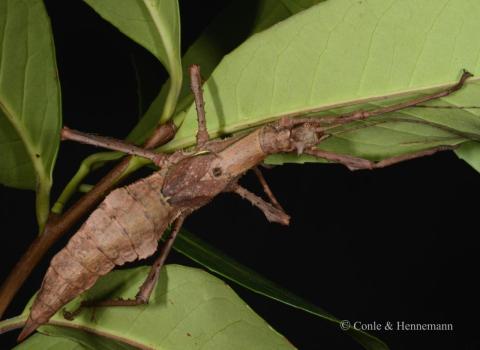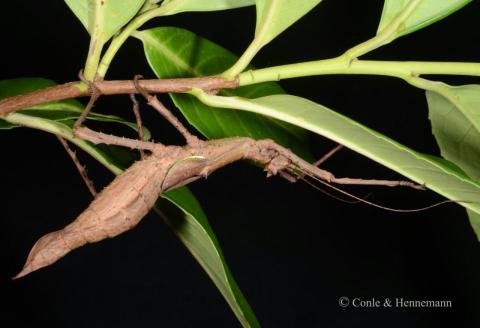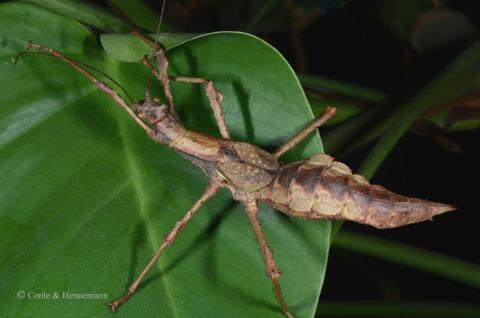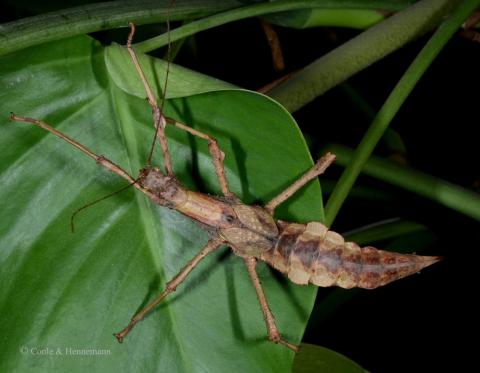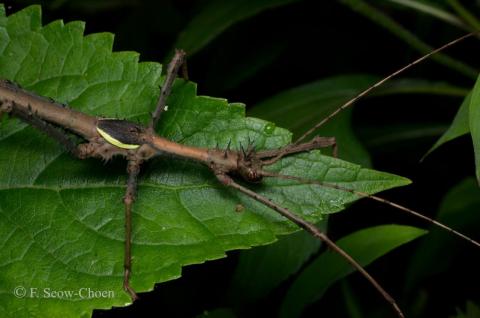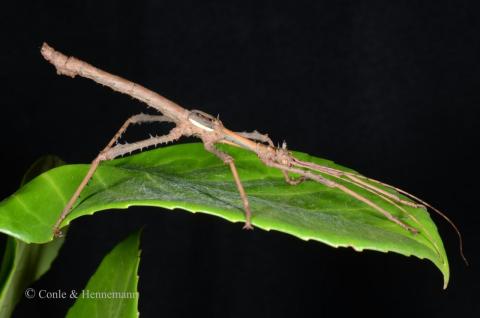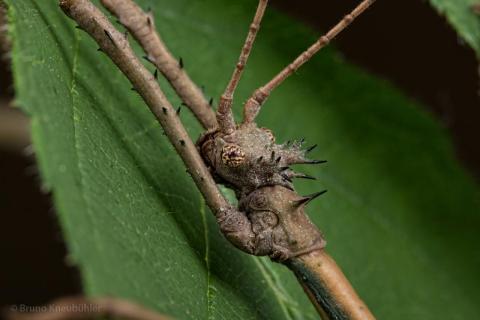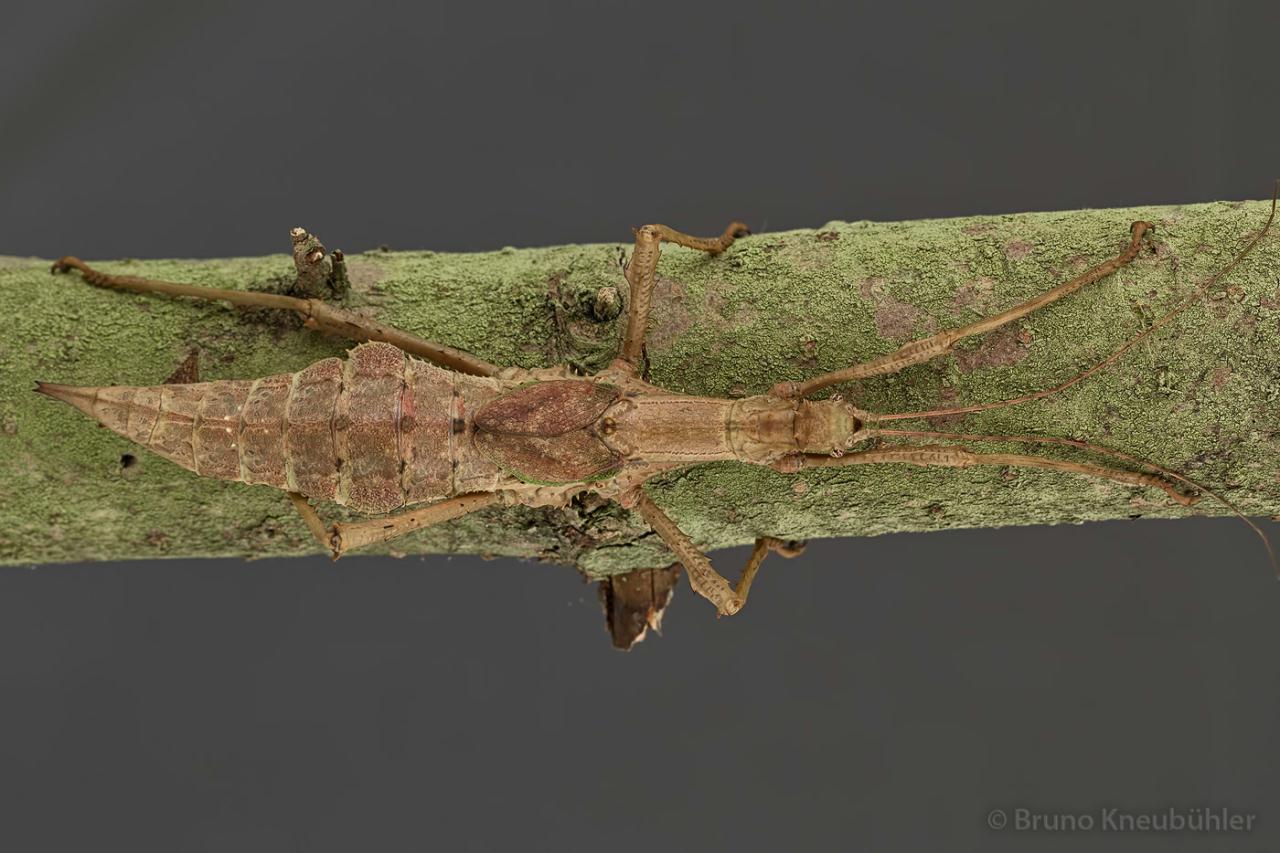
Genus
Stock
CLP
497
Culture status
In culture
Foodplants
Bramble (Rubus spp.)
Breeding notes
(by Bruno Kneubuehler)
General Notes
- described as Haaniella gintingi by Hennemann et al. (2016)
- this culture stock was formerly known as Haaniella sp. "Sibayak"
- the genus Haaniella has been set up by Kirby in 1904, to honor the dutch zoologist Wilhem de Haan
- at the moment (January 2013) the genus contains 7 acknowledged species
- the herewith presented species is a new one, which significantly differs from the other species known from Sumatra (H. jacobsoni, H. muelleri)
_________________
Culture History
- 2012 – first successful culture by Bruno Kneubuehler
- 2012 – distributed to other breeders as Haaniella sp. „Sibayak“
_________________
Origin
- Mt. Sibayak near Brastagi (N-Sumatra)
_________________
Females
- very sturdy phasmids
- yet compared to other Haaniella species, they are almost petite
- about 9 – 9.5 cm long
- basic coloration is a lighter or darker brown
- few females can be reddish-brown – especially at night
- upper surface of forewings is usually darker in color than the body
- lateral margins of forewings are green, especially when freshly adult
- there are two faintly green stripes alongside the lateral margin of the prothorax
- big and branched spines on the head
- only one big pair of spines on the thorax, inbetween the joint of the forewings
- otherwise just a few small spines on the thorax and abdomen
- legs with many spines
- antennae longer than forelegs
- forewings cover the hindwings completely
- hindwings are black
- the abdomen tip is formed into an ovipositor-like structure
- alongside the lateral margin of the abdomen, the openings (spiracles) of the respiratory system are clearly visible
- the „area apicalis“, a morpholocial detail of taxonomic value, is very clearly visible on the legs (see photos on the right)
_________________
Males
- robust phasmids
- about 6 – 6.5 cm long
- the coloration of the males is rather uniform
- basic coloration is brown
- mesothorax reddish-brown
- lateral margin of the forewings is light yellow
- a green double-line along the lateral margin of mesothorax
- big, and also branched spines on the head
- prothorax and mesothorax with a big pair of spines. the latter is just between the joints of the forewings
- many spines on the legs and lower body side
- spines often with a green base and a dark, almost black tip
- antennae longer than forelegs
- hindwings are black
- the „area apicalis“ on the legs is also well visible
_________________
Nymphs
- about 23 mm long (L1)
- freshly hatched nymph already have the „crown of thorns“ on the head
- even when freshly hatched it is easy to see the difference between males and females by comparison of their abdomen tip (see photos on the right)
_________________
Eggs
- about 6 – 7 mm long
- elongate-oval
- grey to greyish-brown
- matt surface with many small, pore-like dents
- big, well visible micropylar plate
- distinct micropylar pore (hind part of the mircopylar plate)
- egg lid (operculum) with a low, cone-shaped raising
_________________
Food Plants
- bramble (Rubus sp.)
is very well accepted by freshly hatched nymphs, older nymphs and adults - no other food plants have been tested by me (so far)
_________________
Behaviour
- nymphs and adults are passiv during the day, while they walk about and feed at night
- they like to hide out in a dark place during the day, for example a big piece of bark which leans against a side of the cage
- especially nymphs can be observed to congregate in groups duing the day. At first this looks like some sort of social behaviour. Yet this behaviour might just arise because of the very limited number of dark hiding places in the cage
- nymphs usually try to feign death when feeling threatened
- adults can also defend themselves actively when disturbed, by making a loud rustling noise with their wings, raising their abdomen and trying to jam the assailant with their spiny hindlegs
- female defend themselves more frequently and vehement than the males
- the can emit a clear defensive secretion from gland just behind the head on the prothorax (H. Dräger, pers. comm.) This defense secretion might be irritative to our mucous membranes, but this has not been tested
- maitings are common during the night, males do not stay together with the same female for a long time
- females lay their egg clusters into a suitable substrate with the „ovipositor“
- about 6 - 10 eggs per clutch, about 1 clutch per month
_________________
Developement
- incubation time (HH-incubation on slightly damp sand at 20 - 23 °C) is about 8 – 10 months (F1)
- but nymphs can hatch also from eggs which are 12 or more months old
- spread some dried (!) moss over the eggs - this will make it much easier for the nymphs to hatch unscathed and it also reduces mould growth to some extend
- hatching ratio in F1 was very high (> 50%)
- males will be adult after about 5 months (at 20 – 23°C), females after about 6 – 7 months
- females start laying eggs after about 4 – 5 weeks
- about 15 eggs per month and female
- adults can live for at least one year
_________________
Breeding Notes
- my general notes on how to breed phasmids are an integral part of this care sheet ...
- it is very easy to breed this species
- freshly hatched nymphs are already quite big, therefore the incubation container should be big enough
- take care that the humidity does not drop too low
- ventilation can be minimal
- a constantly wet paper towel on the floor of the cage helps raising humidity
- a humidity level of about 60+ % rH (for adults) and 75+ % rH (for nymphs) seems to be fine
- nymphs can be kept in a Faunabox (or similar cages like Faunarium)
- move nymphs to a bigger cage as they grow bigger
- a cage of at least 30 x 30 x 30 cm should be provided for 3 adult couples (or considerably larger if the cage also contains other species !)
- generally I advise to keep different phasmid species seperately - unfortunately, overcrowed cages are still too common ...
- I have never sprayed nymphs, adults or their cage with water
- make sure that nymphs, which are about to undergo their adult moult, do not find any places within the cage which would not offer them enough space beneath to moult successfully
- one (or more) low boxes filled with dry sand are well accepted to lay the eggs (see photos on the right). But these boxes must be places in the corners of the cage, otherwise the females will not find them
- if try sand is being offered for the females to lay their eggs, then one should sieve out the eggs once a week so that they do not dry up



